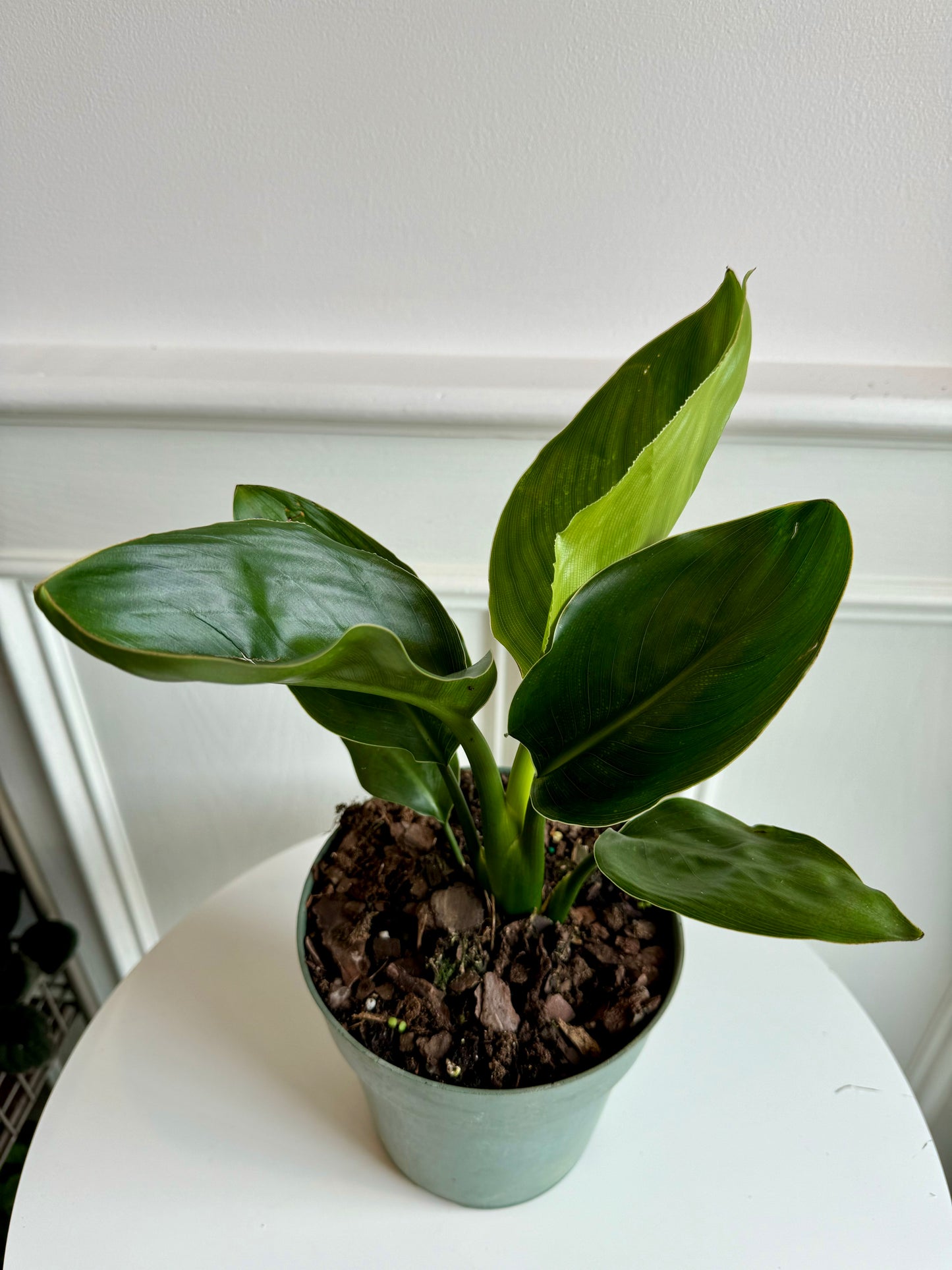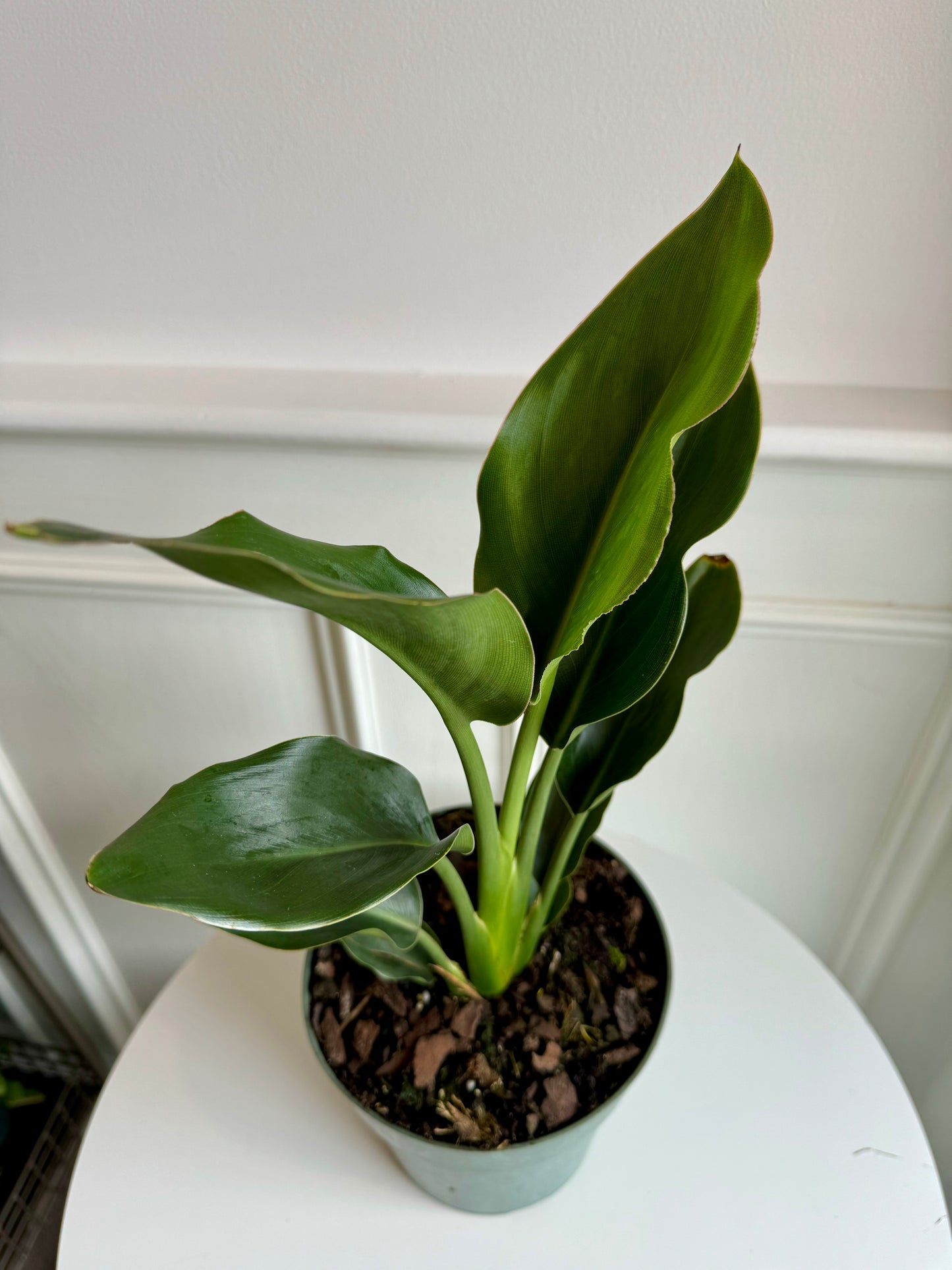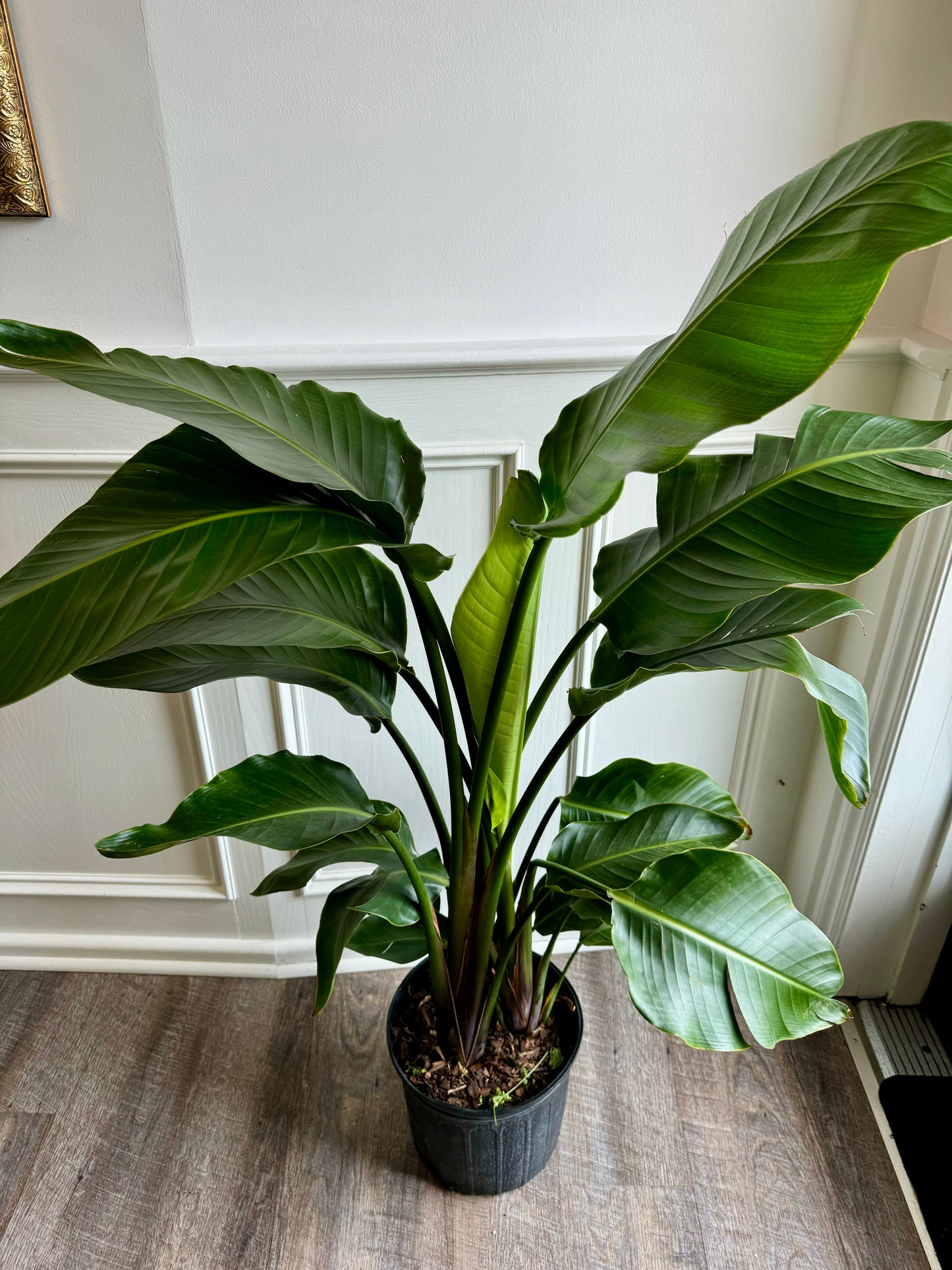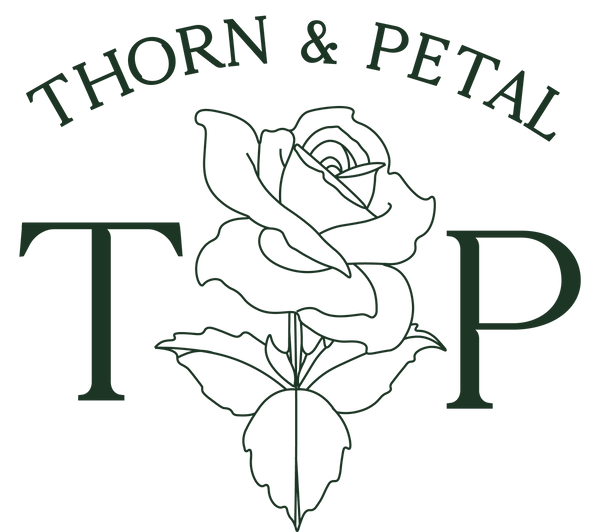Bird of Paradise
Bird of Paradise
Couldn't load pickup availability
The Bird of Paradise plant, scientifically known as Strelitzia reginae, is a striking and iconic tropical plant native to South Africa. Here's some information about the Bird of Paradise plant:
Appearance: The Bird of Paradise plant is renowned for its large, banana-like leaves and vibrant, bird-shaped flowers. The leaves are long, glossy, and arranged in a fan-like pattern, resembling the shape of a banana leaf. The flowers emerge from a tall, upright stalk called a "scape" and consist of three orange or yellow sepals and three vivid blue petals, resembling the plumage of a tropical bird.
Native Habitat: Strelitzia reginae is native to the coastal regions of South Africa, where it grows in subtropical and tropical climates. It thrives in warm, humid environments and is often found along riverbanks and in marshy areas.
Growing Conditions:
Light: Bird of Paradise plants prefer full sun to partial shade. They thrive in bright, indirect light but can tolerate some direct sunlight, especially in the morning or late afternoon.
Temperature: Maintain temperatures between 65°F to 70°F (18°C to 27°C) for optimal growth. Bird of Paradise plants prefer warm and stable temperatures and should be protected from drafts and temperature extremes.
Watering: Keep the soil consistently moist but not waterlogged. Water the plant thoroughly when the top inch of soil feels dry to the touch, allowing excess water to drain from the bottom of the pot.
Humidity: Bird of Paradise plants thrive in high humidity environments. Regular misting or placing the plant in a humid location can help maintain adequate humidity levels.
Soil: Plant Bird of Paradise in a well-draining potting mix rich in organic matter. A mix of peat moss, perlite, and compost works well for providing good drainage while retaining moisture.
Fertilization: Feed Bird of Paradise plants with a balanced liquid fertilizer diluted to half strength every 4 to 6 weeks during the growing season (spring and summer). Reduce or stop fertilizing during the fall and winter months when growth slows down.
Maintenance: Remove any dead or yellowing leaves regularly to maintain the plant's appearance. Prune back any old or spent flower stalks to encourage new growth and flowering.
Propagation: Bird of Paradise plants can be propagated through division or by collecting and planting seeds. Division involves separating the plant into smaller clumps, each with its own roots, and replanting them in separate pots.
Pet Friendly: Birds of Paradise plants (Strelitzia reginae) are not considered toxic to cats, dogs, or other pets according to the ASPCA (American Society for the Prevention of Cruelty to Animals).
Overall, the Bird of Paradise plant is a stunning and low-maintenance addition to any indoor or outdoor tropical garden. With proper care and attention to its growing conditions, Bird of Paradise plants can thrive and become a focal point in your home or garden, adding a touch of exotic beauty with their striking foliage and vibrant flowers.
Share








